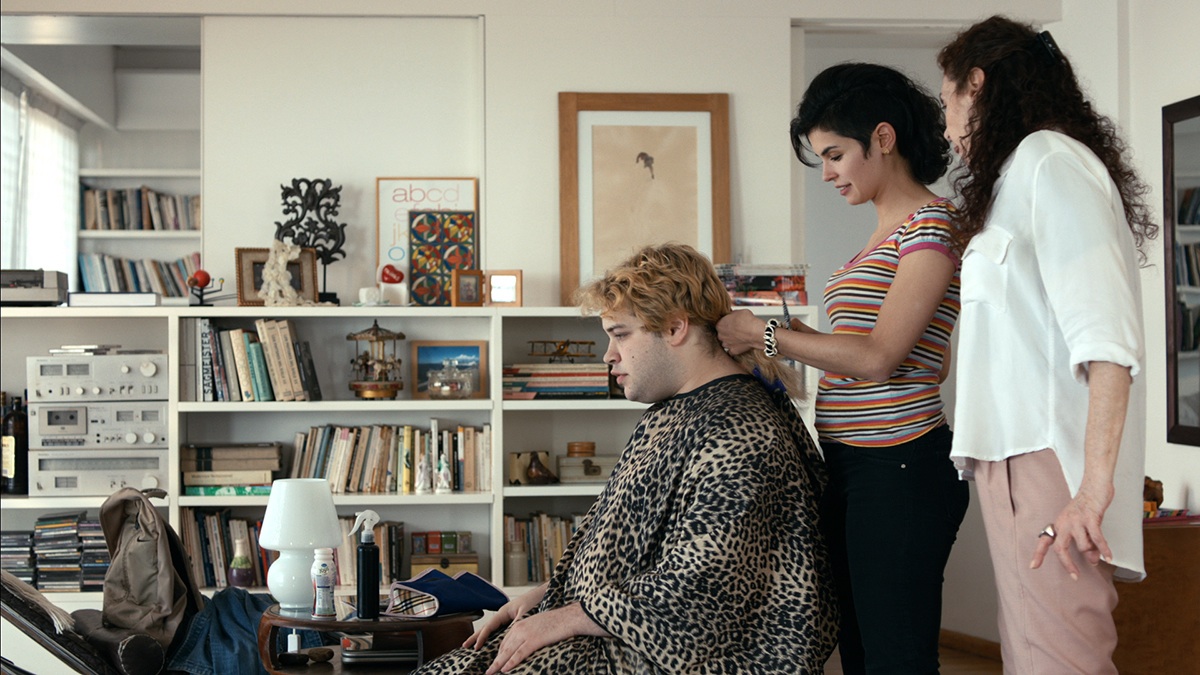The title of the new short film by Gael García Bernal, La mano visible literally translates as “The Visible Hand.” It’s a clever phrase that works on both the literal and the metaphorical levels, since this portrait of a brief transaction within an apartment in Buenos Aires entails skilled manual labor as well as a direct physical manifestation of economic relations that are typically unseen. That’s to say, García Bernal takes great care to display a means whereby the service economy might permit the reintroduction of personal interaction without exploitation—a genuinely human exchange.
As the ten-minute film begins, we see Susana (Silvina Sabater), a middle-aged woman, moving around her apartment. Then, on a black screen, we are given an epigram, presented in dialog form:
The value of goods exists independently of the exchange.
Because it is the result of human labor, right?
At this point a young woman named Romina (Romina Pucciarelli) arrives at Susana’s door. She has come to cut Susana’s hair, per an arrangement made through “the page,” an unnamed website through which users agree to provide services to one another, or to other users, free of charge. It is a barter economy of services based on the expertise (or avocations; Romina is a phys-ed teacher, not a professional haircutter) of the participants.
A few interesting things happen during the interaction between Romina and Susana. Susana goes back into the kitchen to make Romina some coffee (prepared by other users of the site) while Romina sets up her haircutting tools and tarp in the living room. During this time, she begins almost absentmindedly telling Susana about problems in her love life. Somehow, this business transaction has authorized an unexpected personal engagement.
As Romina begins working with Susana’s hair, García Bernal indeed makes the hairdresser’s hands very visible. In extreme close-up, we see her hands move through the hair, straighten curls, massage the scalp, unbraid large strands of Susana’s red-gray mane with a kind of Bressonian exactitude. Susana, meanwhile, goes from speaking about her hair to discussing the loss of her husband and the difficulty of life without him. The “exchange” has reversed.
In the end, Romina doesn’t end up cutting Susana’s hair at all, at least not within the running time of the film. (Someone else becomes the client, and he must sign into the site to volunteer his specialized knowledge.) García Bernal shows that a barter economy, based on one-to-one exchange, can supplant the alienating labor relations inherent in service industries that operate on a mass scale.
In The Wealth of Nations, Adam Smith claimed that the economy was essentially a self-regulating engine. He famously likened this process as the guidance of an “invisible hand.” (Of course, Smith couldn’t really explain why capitalism seems to give so many of us the invisible finger.) García Bernal, by contrast, provides a small vignette in which labor and its local economy is not only seen, but felt, not only as want but potentially as friendship.





